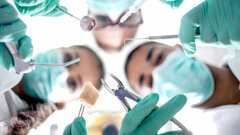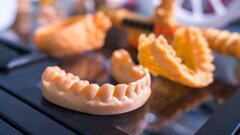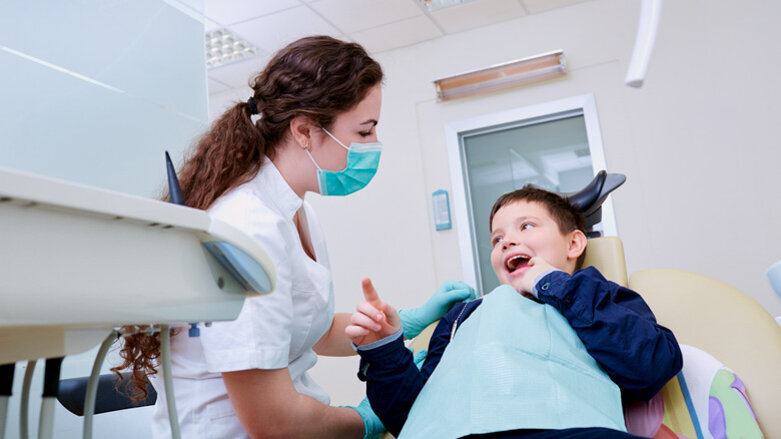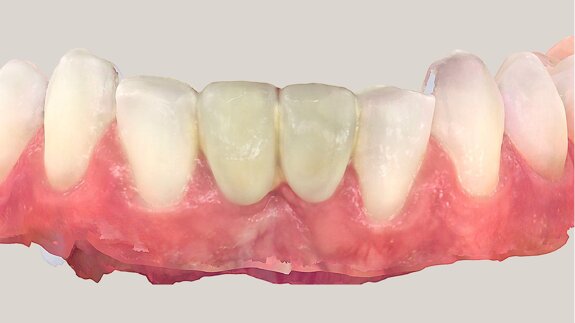UMEÅ, Sweden: Researchers at Umeå University in Sweden have made a novel discovery connecting highly virulent types of the Streptococcus mutans caries bacterium and their adhesive function to children with rampant caries and increased risk of dental caries. According to the researchers, the results could lead to a better way of identifying high-risk patients and improving treatment.
For the five-year study, the saliva of 390 children who were 12 years old at the start was analysed and their dental health monitored. After analysis of the saliva samples and isolated bacterial strains, the children were divided into various risk groupings based on the genetic type of the caries bacterium they carried. At the five-year follow-up, the researchers could see how caries had developed in the various risk groupings.
Through biochemical studies, the researchers found a link between the adhesive proteins SpaP B and Cnm and their adhesion to saliva and DMBT1, a protein in the saliva. They also showed that higher binding ability led to increased caries development over the five-year study period. Based on the findings, the researchers established that high-risk children have more virulent variants of S. mutans, whose adhesive function makes them more aggressive and better survivors.
“Caries is a life style condition often caused by eating and oral hygiene habits that lead to an acidic pH in the mouth. The pH level has a damaging effect on the enamel and further promotes the growth of acid producing bacteria such as Streptococcus mutans,” said Prof. Nicklas Strömberg, head of the Department of Cariology at the university and lead author of the study.
“This new knowledge of the identified types of bacteria and how they initiate caries development could be used to improve individualised dental care. The presence of the bacteria could be used as biomarkers for early detection of high-risk patients. Also, their adhesive function could constitute new targets for treatment,” said Strömberg.
According to Strömberg, in a study yet to be published, his team found that other high-risk children have genetic defects in their salivary receptors for bacteria, and the affected genes may involve those associated with autoimmune diseases. Nevertheless, he stated: “It’s still important to emphasise that caries in the many individuals of low-to-moderate risk is still modulated by eating and oral hygiene habits.”
The study, titled “Streptococcus mutans adhesin biotypes that match and predict individual caries development”, was published in the EBioMedicine journal on 21 September.
Tags:
LONDON, UK: The Committee of Advertising Practice is clamping down on junk food advertising aimed at UK children. As of 1 July, the promotion of high fat, ...
MANDAUE, Philippines: Four volunteers working with Dentaid, a dental charity that provides essential dental care to people in the UK and to people in many ...
MIAMI: The holiday season can be hard on one’s health, and people suffering from obstructive sleep apnea (OSA) feel it the most. Overeating and ...
Live webinar
Mon. 12 January 2026
9:00 am EST (New York)
Prof. Judith Jones D.D.S; M.P.H., Prof. Kakuhiro Fukai D.D.S., Ph.D, Dr. Bathsheba (Bethy) Turton
Live webinar
Wed. 14 January 2026
12:00 pm EST (New York)
Dr. Théo Laplane, Dr. Robert Gottlander DDS
Live webinar
Fri. 16 January 2026
12:00 pm EST (New York)
Live webinar
Mon. 19 January 2026
1:00 pm EST (New York)
Philipp Kopp, Michael Seeber
Live webinar
Thu. 22 January 2026
2:00 pm EST (New York)
Dr. Nicola M. Grande DDS, PhD
Live webinar
Wed. 28 January 2026
8:00 am EST (New York)
Live webinar
Wed. 28 January 2026
11:00 am EST (New York)
Prof. Dr. Jan-Frederik Güth



 Austria / Österreich
Austria / Österreich
 Bosnia and Herzegovina / Босна и Херцеговина
Bosnia and Herzegovina / Босна и Херцеговина
 Bulgaria / България
Bulgaria / България
 Croatia / Hrvatska
Croatia / Hrvatska
 Czech Republic & Slovakia / Česká republika & Slovensko
Czech Republic & Slovakia / Česká republika & Slovensko
 France / France
France / France
 Germany / Deutschland
Germany / Deutschland
 Greece / ΕΛΛΑΔΑ
Greece / ΕΛΛΑΔΑ
 Hungary / Hungary
Hungary / Hungary
 Italy / Italia
Italy / Italia
 Netherlands / Nederland
Netherlands / Nederland
 Nordic / Nordic
Nordic / Nordic
 Poland / Polska
Poland / Polska
 Portugal / Portugal
Portugal / Portugal
 Romania & Moldova / România & Moldova
Romania & Moldova / România & Moldova
 Slovenia / Slovenija
Slovenia / Slovenija
 Serbia & Montenegro / Србија и Црна Гора
Serbia & Montenegro / Србија и Црна Гора
 Spain / España
Spain / España
 Switzerland / Schweiz
Switzerland / Schweiz
 Turkey / Türkiye
Turkey / Türkiye
 UK & Ireland / UK & Ireland
UK & Ireland / UK & Ireland
 Brazil / Brasil
Brazil / Brasil
 Canada / Canada
Canada / Canada
 Latin America / Latinoamérica
Latin America / Latinoamérica
 USA / USA
USA / USA
 China / 中国
China / 中国
 India / भारत गणराज्य
India / भारत गणराज्य
 Pakistan / Pākistān
Pakistan / Pākistān
 Vietnam / Việt Nam
Vietnam / Việt Nam
 ASEAN / ASEAN
ASEAN / ASEAN
 Israel / מְדִינַת יִשְׂרָאֵל
Israel / מְדִינַת יִשְׂרָאֵל
 Algeria, Morocco & Tunisia / الجزائر والمغرب وتونس
Algeria, Morocco & Tunisia / الجزائر والمغرب وتونس
 Middle East / Middle East
Middle East / Middle East









































To post a reply please login or register